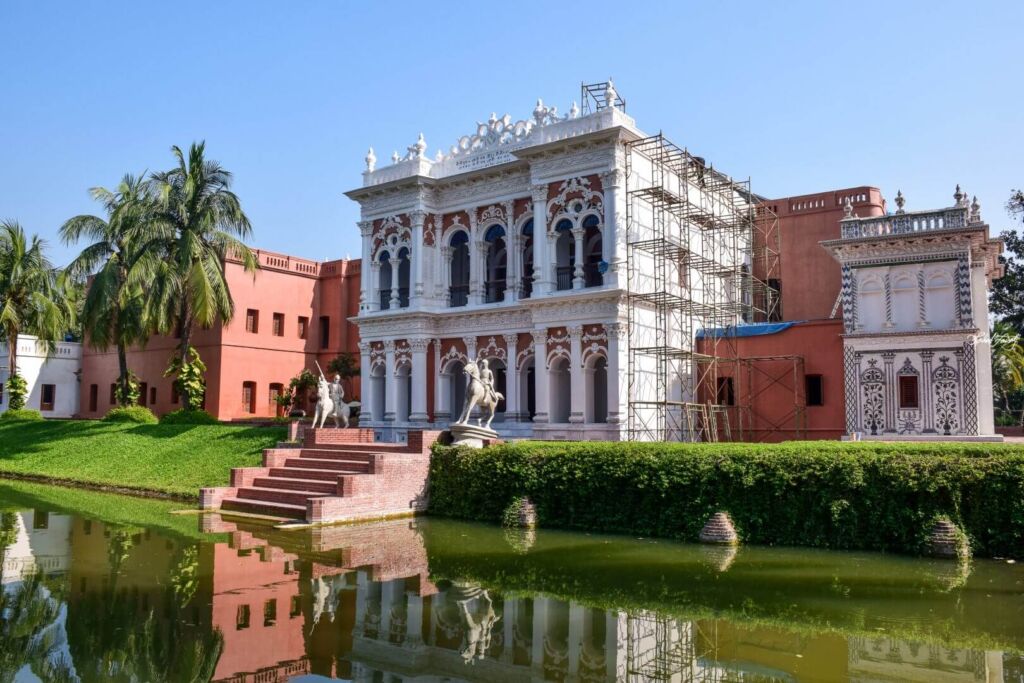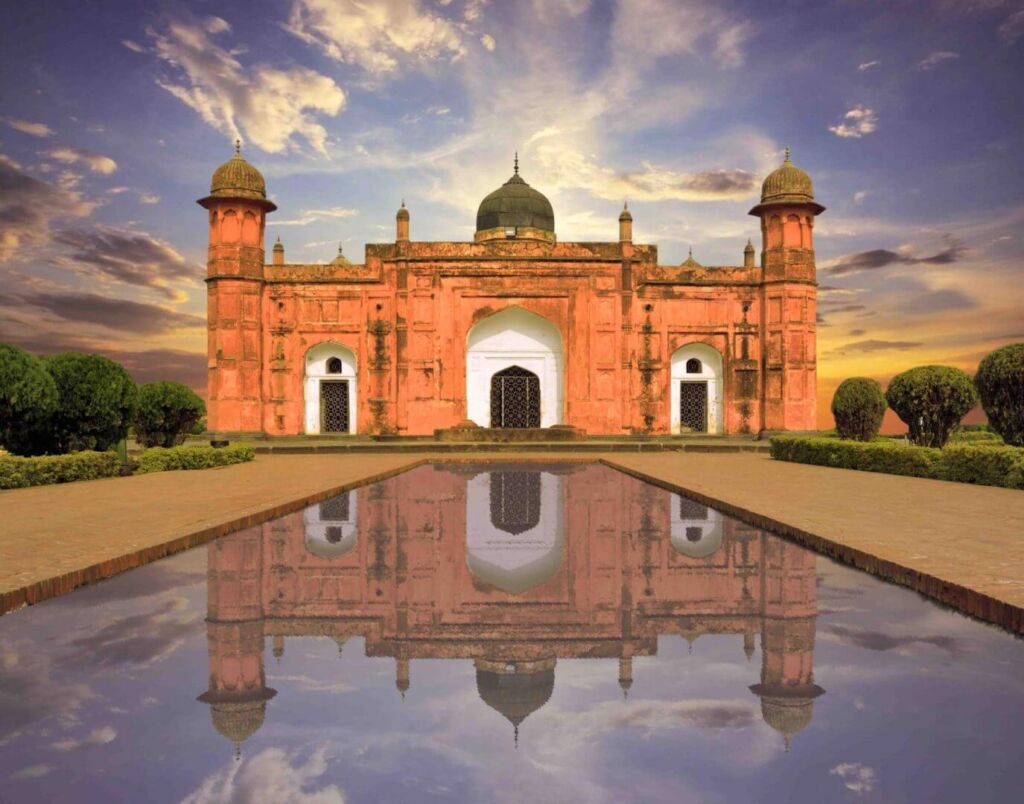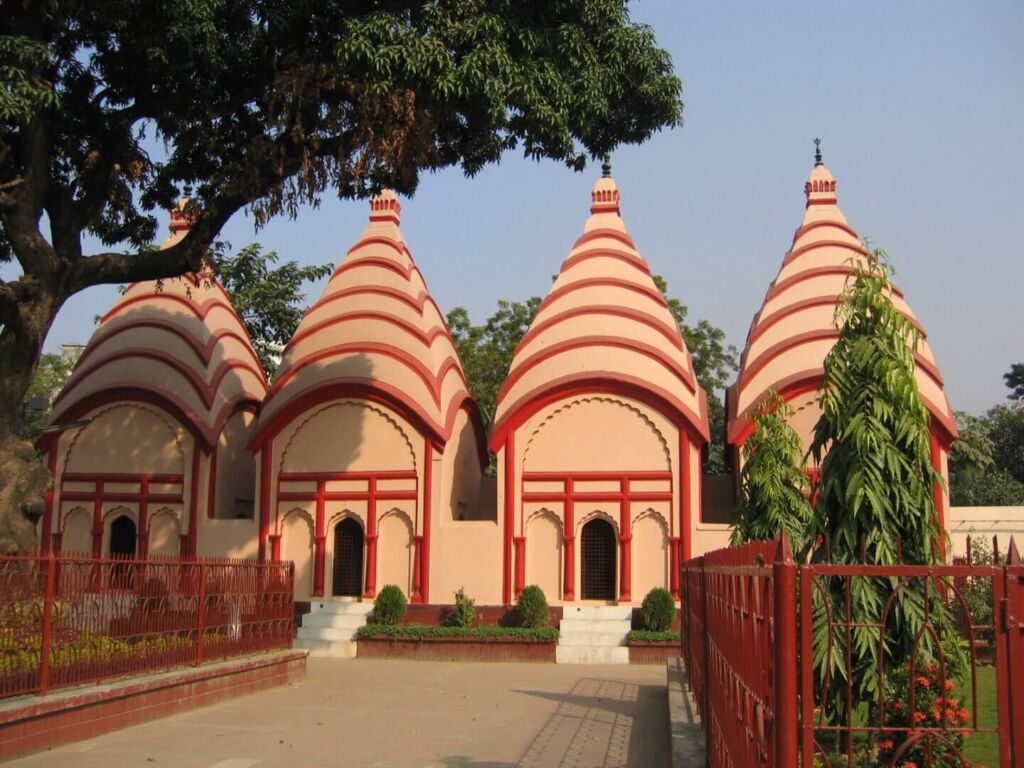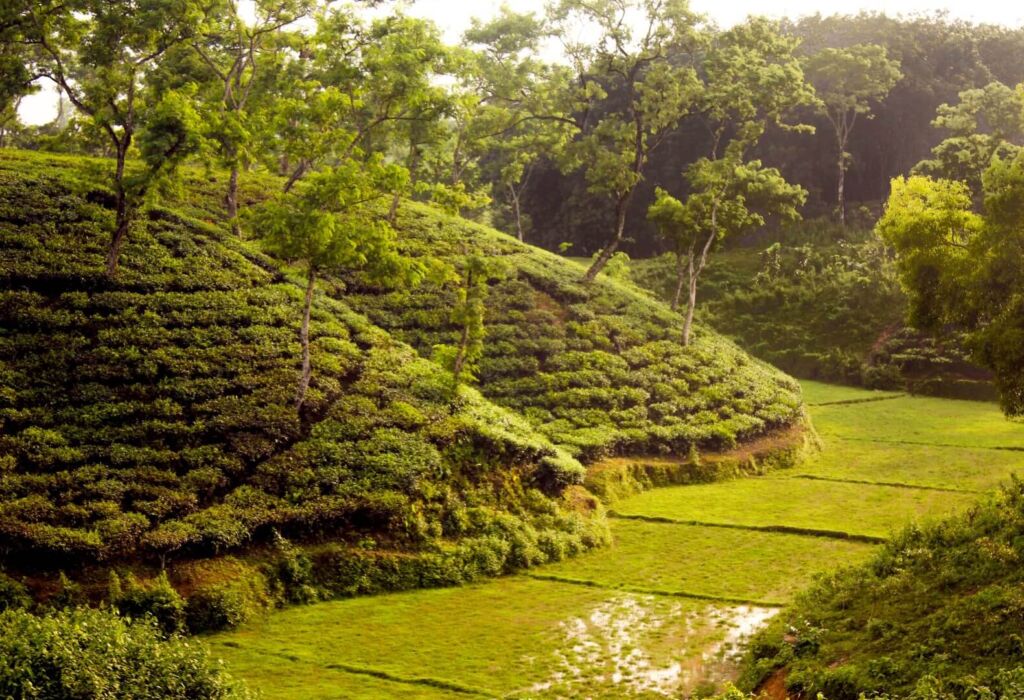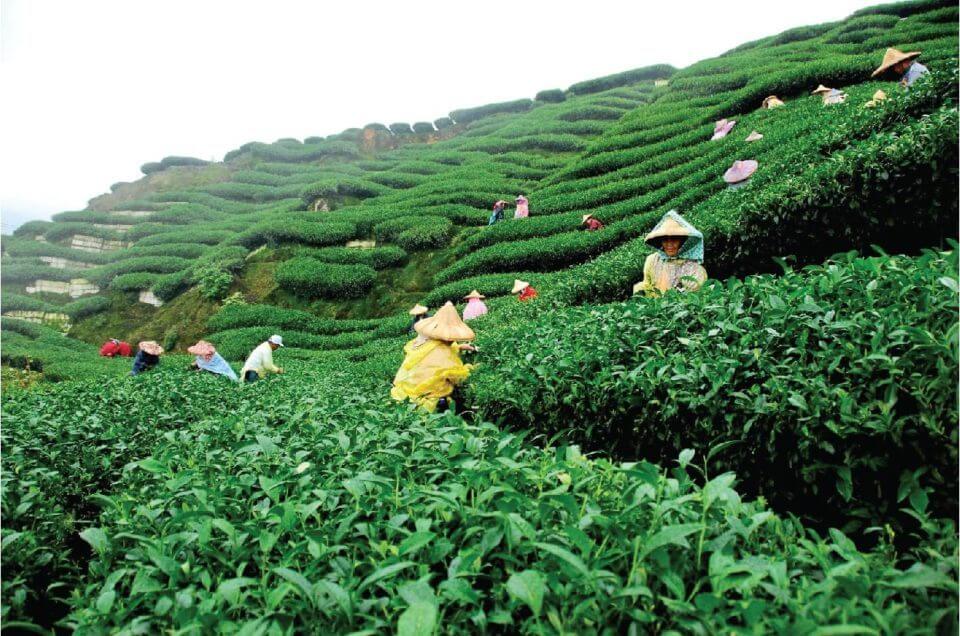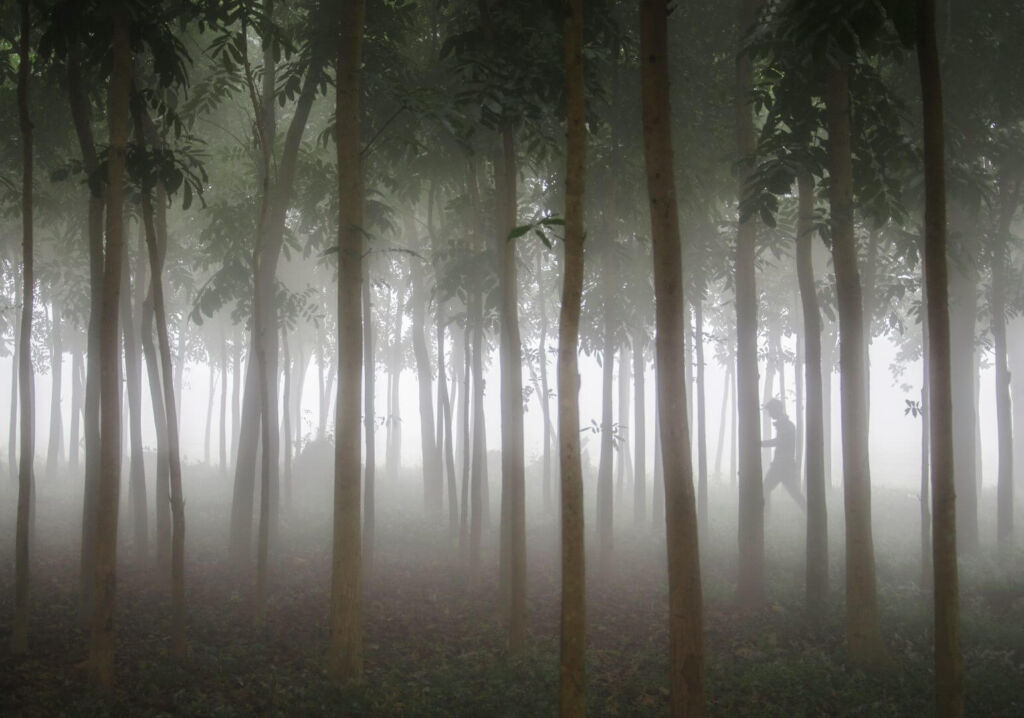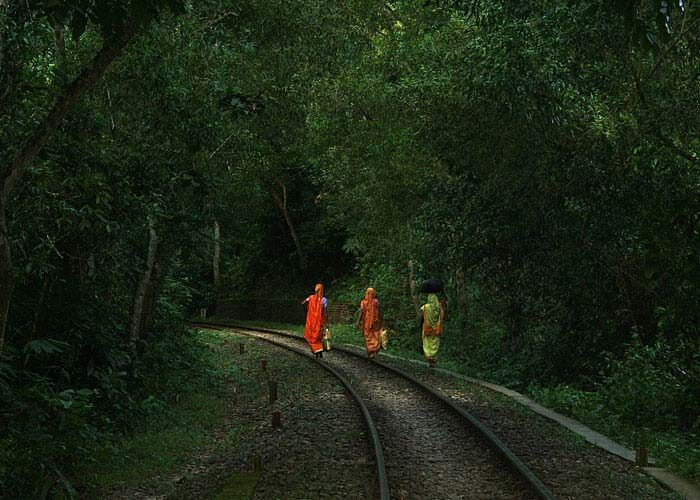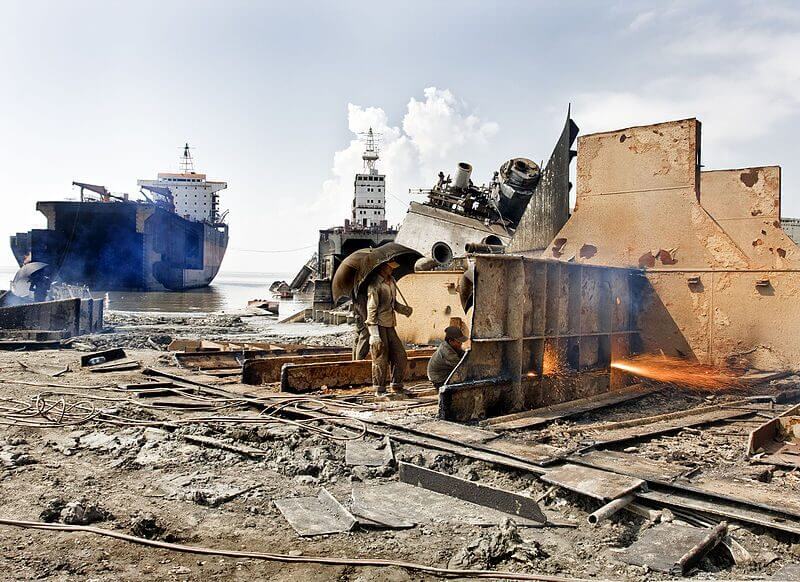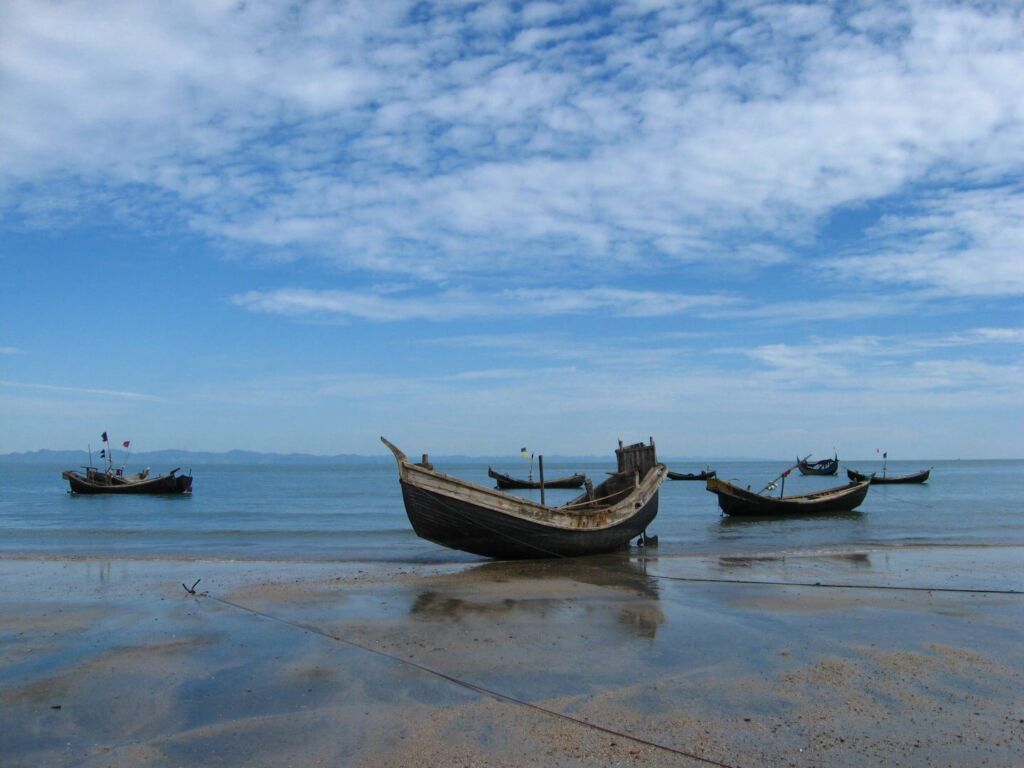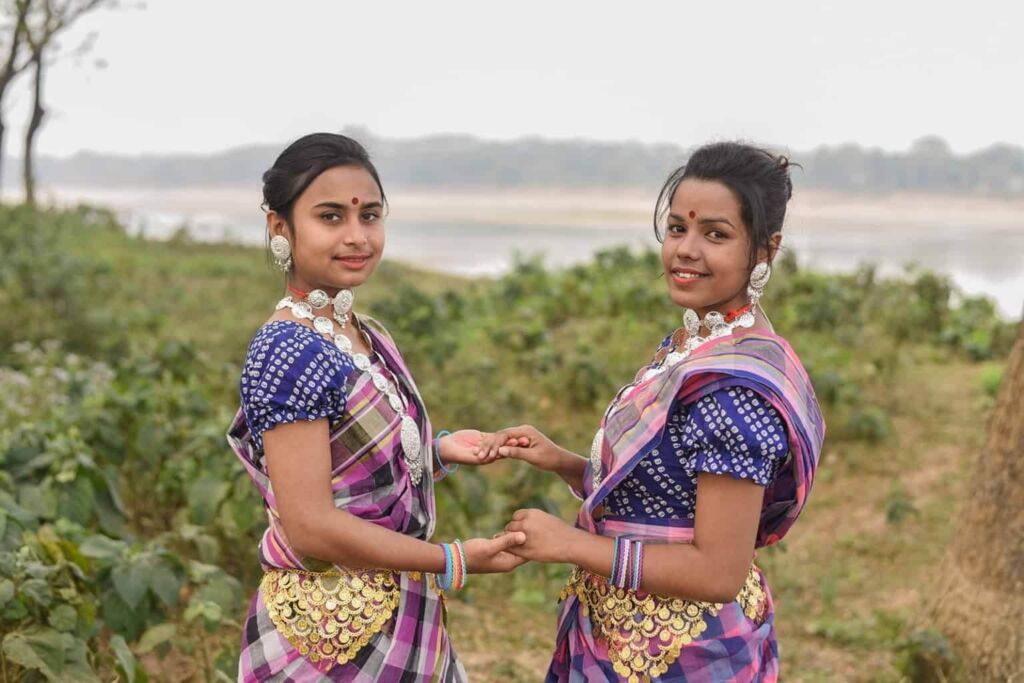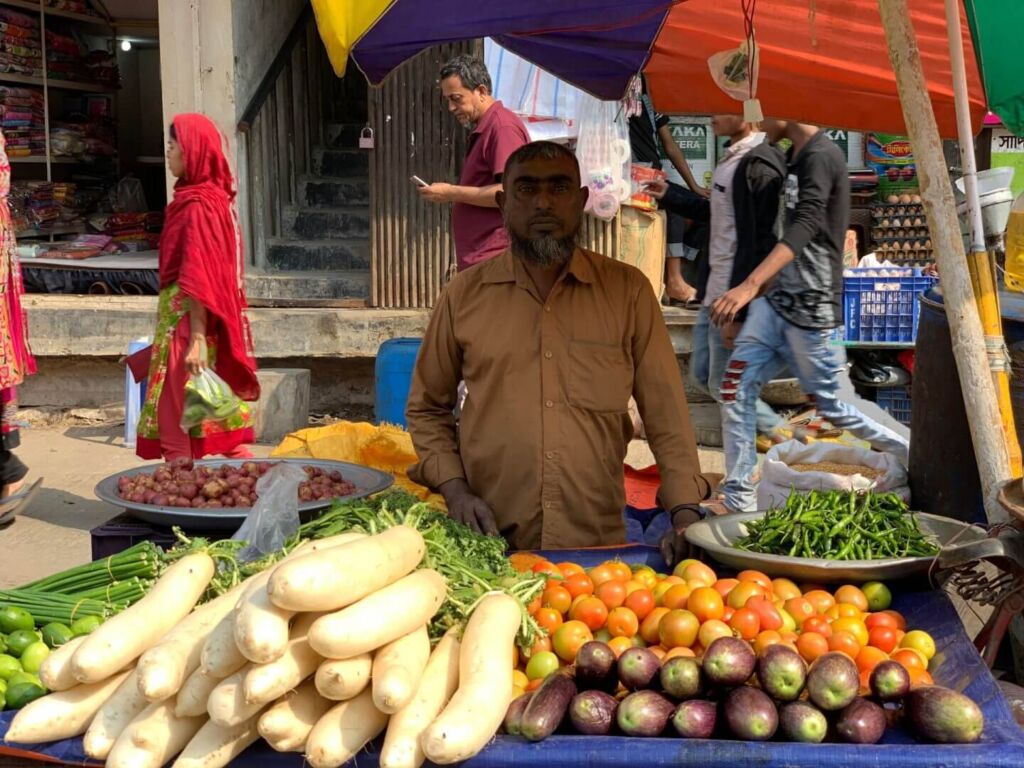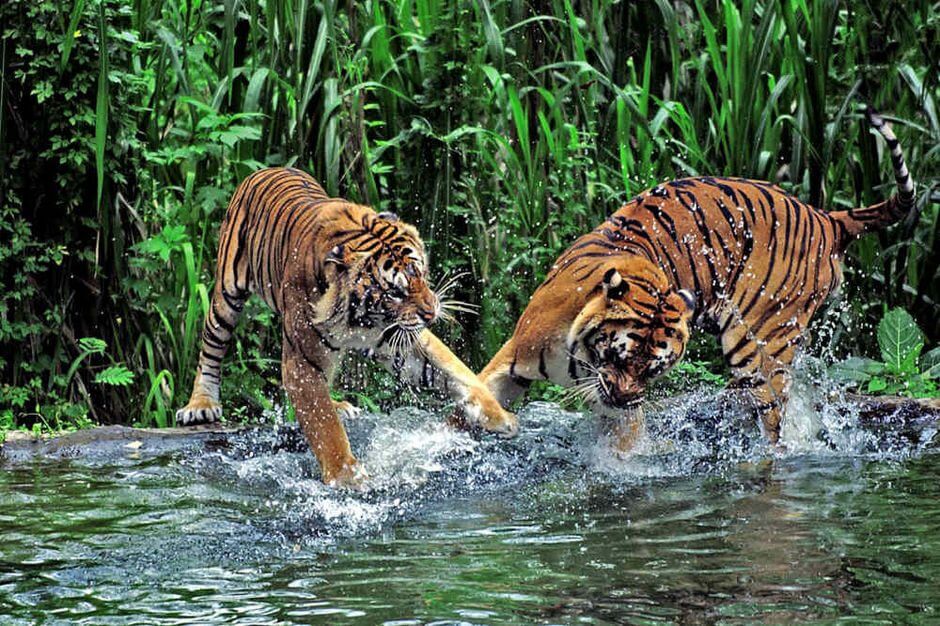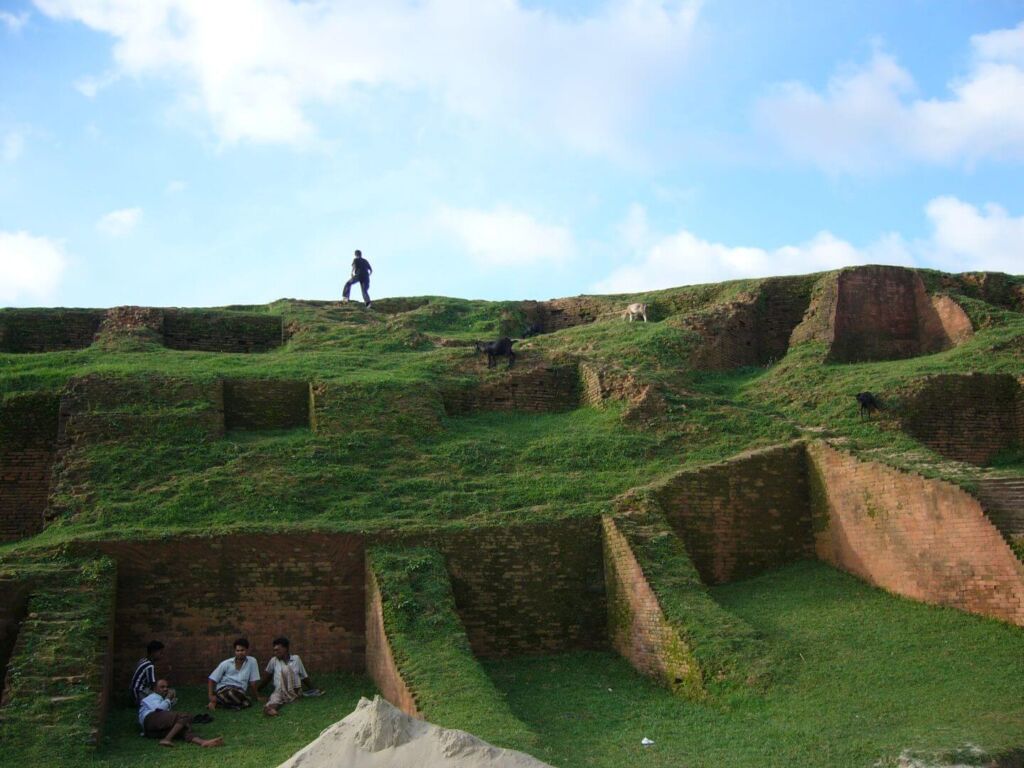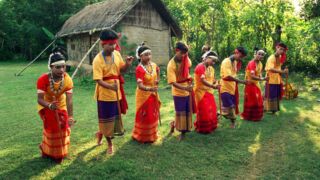Our team has put together a special 24-day trip that takes you through the highlights of ‘the land of the Bengali speakers’. The starting point of the trip is of course the capital Dhaka, a dizzying cauldron full of energy and activity. Every day, about half a million brightly painted bicycle rickshaws move like colorful waves through an endless sea of traffic. A boat trip on the Buriganga River, the heart artery of Old Dhaka, introduces you to an unforgettable spectacle of life in this hard-working metropolis.
In the rural region of Rajshahi, in the northwest of the country, the cheerful colors of the bazaars and the exuberant casualness of the city dwellers alternate with small villages and forgotten remains of a rich, ancient history. See religious monuments such as the red sandstone Hindu temple of Kantanagar, the Buddhist monastic ruins of Paharpur and the ancient citadel of Mahasthangarh. The silent witnesses to the mighty principalities that once thrived here in prosperity. To the southeast, take a two-day cruise through the beautiful mangroves and swamps of the Sundarbans in search of the Bengal tiger and other wildlife.
One of Bangladesh’s most picturesque landscapes are the tea-covered hills at Srimangal, in the sparsely populated corner of the country’s northeast. Besides tea plantations, you will also find the oldest and most accessible semi-tropical forests of Bangladesh in this area, where you can enjoy the silence of nature.
Travel via cosmopolitan Chittagong, the country’s busiest port city, to the most fascinating region of Bangladesh, both scenically and culturally: the Chittagong Hill Tracts. In this forested mountain area that stretches along the Burmese border, tribes like the Chakma and Marma still lead a life of their own, separate from the laws and regulations of the rest of the country. For a long time, this special, predominantly Buddhist area was closed to tourism, but for a few years now, visitors have been slowly admitted. Charming Rangamati is the main town of the region and is situated on a number of small islands in the picturesque Kaptai Lake. A boat trip to the tribal villages on the tropical green shores of this lake is an undisputed highlight of your visit, especially on market days.
This journey has a pioneering character, that also means that you travel through adventurous, non-touristy areas. It is a beautiful area, but a lot can go wrong along the way. You travel on bad roads. Sometimes you’ll have long days, sometimes the road is blocked or gone. It is therefore possible that the route has to be adjusted.You will travel through little traveled and developed areas and regular accommodation will be provided.
Day One
Today you’ll arrive at Dhaka. You’ll be awaited by our team and brought to your hotel where you’ll have a free evening.
Day Two Dhaka
Today we’ll explore the capital of Bangladesh: Dhaka, where we will visit Lalbagh Fort, a 17th century Mughal palace that today is an oasis of calm in the middle of the city. Particularly popular as a meeting point for local youth. Although the majority of the population is Muslim, there is also room to visit a Hindu temple: Dhakeswari Temple. A first acquaintance ends in the Newmarket shopping complex. Everything is for sale here and there is a cozy atmosphere. On the top floor, the textile department is very colorful and photogenic. Here the cloths and rugs are still old-fashioned with blocks provided with their pattern.
Day 3 Sonargaon
During the day you will visit Sonargaon, the ‘Golden City’, the former capital of the Bengal Empire (13th-17th century). Along the way we can visit a traditional village, where we will also have lunch.
Day 4 Sreemangal
Today we’ll have a travel day that takes us to Sreemangal, the ‘tea capital’ of Bangladesh. The city is nestled in the middle of the hills dotted with tea plantations. Without a doubt one of the most beautiful landscapes in the country. Of course, a visit to one of the tea plantations should not be missed. You spend the night in a guesthouse on one of those tea plantations.
Day 5 Lawachara Forest Tour
In the morning we drive to the Lowacherra Forest reserve where we take a walk through the jungle. We will also visit villages of the Khasi and Garo tribes. In the afternoon you will meet the Monipuri tribe, we will visit a village and learn more about the life of these ‘hilltribes’.
Day 6 Chittagong
Today we’ll cover a considerable distance to Chittagong, the second largest city in Bangladesh and also the largest port in the country, to the south. We’ll try to travel this route by train, but train tickets can only be booked late and it is never quite certain that we will actually get them. If it is not possible to obtain train tickets, we will simply travel with our own transport.
In the afternoon we’ll arrive in Chittagong. In colonial times – except for Calcutta – most of the British in all of Bengal lived here. We’ll visit the shipwrecks on the beach. Chittagong is famous for this, shipwrecks are brought here and completely gutted to resell all parts.
Day 7 Rangamati
In the morning there may be time to look around Chittagong. Then we’ll travel on to the so-called ‘Chittagong Hill Tracts’, a region that is completely different in landscape and culture from the rest of Bangladesh. Rangamati, located on the scenic Kaptai Lake, is the first place we visit here. In the densely vegetated hills live tribal peoples who still live according to the original traditions. Most of these peoples are Buddhist. In Rangamati you can visit some Buddhist temples and monasteries.
Day 8 Kaptai Lake Excursion
We’ll take a boat trip on Kaptai Lake and pass through a gorge to visit Subalong and meet some tribes on the islands in the lake. One of those tribes is the Chakma, who also run a small restaurant where lunch is probably taken. At the end of the afternoon we return to Rangamati where you can visit the local market.
Day 9 Bandarban
Via the Arakan Highway we continue south through the hills of the Chittagong Hill Tracts to the tribal market town of Bandarban, a four hour drive. Here we can stroll through the town with its market, Golden Temple and Meghla Lake. In the afternoon we’ll take a boat trip on the Sangu River.
Day 10 Cox’s Bazar
Today a further exploration of the hilly area of Bandarban. We’ll visit Chimbuk Hill and some villages of the Rakhain tribe. We also stop at the Ramu Buddhist Temple, on the way to Cox’s Bazar.
Day 11 St Martin’s Island
In the morning we drive to Teknaf. From here you take the ferry (three hours) to Saint Martin’s Island, a small tropical paradise surrounded by coral reefs. There are no roads, rickshaws, cars, just palm trees, fish markets, beaches and a few turtles.
Day 12 Cox’s Bazar
Visit the island in the morning, enjoy your free time on the coral island. There are dry fish markets, local markets to enjoy. We will take you to an island if time permits called Chara Deep! Here the coral is very sharp and you have to be careful if you want to snorkel! In the afternoon, take the boat back to Teknaf and return by bus to Cox’s Bazar. Overnight at Cox’s Bazar.
Day 13 Moheshkhali island
In the morning after breakfast, we will visit the speedboat station near the fish markets, all day to explore the island town including Hindu Temple, Dry Fish Market, Salt Farm and many more. In the afternoon we’ll fly to Dhaka.
Day 14 Bogra
We’ll drive across the countryside to Bogra. Along the way we’ll visit projects of the now world famous microcredit project of the Grameen bank. We also stop at the 17th century Atia mosque and in the village of Tangail. In the village you will learn more about the activities of this organization and about village life. You can see how various crafts are still performed in the traditional way. In the afternoon we’ll arrive in Bogra.
Day 15 Dinajpur
Today we travel to Dinajpur via the archaeological sites of Mahasthangarh. Mahasthangarh is said to be the oldest city in Bangladesh, dating back to the 3rd century BC. Nearby are archaeological foundations of temples and the citadel of the Pala rulers from the 8th century. The combination of the green grass and the stone remains make it a special place.
Dinajpur is a district of significant historical value for Hindu culture. We visit the Kantaji temple full of statues depicting the stories from the Ramayana and the Mahayatra. Built in the year 18 and at the time the largest terracotta temple in the world. We will also try to visit the Nayabad mosque.
Day 16 Rajshahi
On the way to Rajshahi we will stop at one of the cultural highlights in the northwest of the country: Paharpur. This Buddhist monastic complex dates from the time of the Pala dynasty (7th to 12th century). The ruin complex is beautiful and peaceful in a rural setting and was the largest Buddhist building south of the Himalayas. Larger than, for example, Borobudur in Indonesia.
After the visit we’ll drive on to our hotel in Rajshahi; an important silk production center on the border with India. Of course there is the possibility to visit one of the silk factories and take a closer look at the process from caterpillar to silk.
Day 17 Gaud excursion
Today we’ll explore the area around Rajshahi. Close to the Indian border is Gaud, once the capital of the Buddhist Pala rulers, although the remaining sites date mainly from the time of the Moghuls (15th to 17th century). We will visit Choto Sona Mosque, Darasbari Mosque and Madrassa (Quran School) and Khania Dighi Mosque. We will make a lunch stop in Chapai Nawabganj and visit some local projects.
Day 18 Sundarbans via Mongla
Early in the morning we’ll drive for about four hours to Mongla, the harbor for boat trips in the Sundarbans. In the afternoon, board the boat to begin the cruise through the Sundarbans. Enjoy the beautiful surroundings and a first dinner on board. The cook conjures up a delicious meal with fresh fish and shrimps on the table for you. You spend the night on board!
Day 19 Sundarbans
The Sundarbans is the world’s largest mangrove forest. You will find an exotic animal world here, including the Bengal tiger. The Sundarbans even has the highest tiger density of any national park in the world. Nearly 10% of the tigers living in the wild live in the Sundarbans, where they are notorious for regularly devouring people who live here! In addition to tigers, there are more than 300 bird species, otters, monkeys, crocodiles, deer, boars and river dolphins.
Along the way during the boat trip you can get off the boat several times to take walks through the area and to and in small hamlets along the water. The boat takes you through the major rivers and the smaller canals. On a few occasions you will take a small boat trip to sail through the smaller channels to get closer to the shore and increase the chance of spotting game (including the tiger). For the rest of the day, the boat travels through the Sundarbans towards Chandpai and the south side of the Sundarbans on the Bay of Bengal.
Day 20 Barisal
We sail back to Mongla and continue to Bagerhat, the mosque-city of the country. This town, which is protected by UNESCO, has several special mosques from the Middle Ages. The most special and beautiful is the so-called ’60-domed mosque’; this Shai Gumbad mosque actually has 77 domes and looks like a fortified fortress. You will also visit the mausoleum of Khan Jahan Ali and several other 15th century mosques such as the 9-domed mosque and smaller 1-dome mosques. The mosques are located in a beautiful rural area and because there are many pilgrims, there is always something to do. We will then continue to Barisal.
Day 21 Barisal: Floating Market
In the morning you will board a boat to explore the backwaters, a labyrinth of canals, rivers, streams. There are many villages, floating markets and the whole area is full of life. It is somewhat similar to the Kerala backwaters in South India, but without tourists! The most beautiful stretch is from the Sandha River to Attghar – Kuriana and Jagdishpur. In the afternoon we will return to Barisal.
Day 22 Barisal – Dhaka
Today we return to Dhaka, where you’ll have a free evening.
Day 23 Dhaka
Today you will get to know this immense city, which is bustling with life. Dhaka is a chaotic city full of people, about 16 million, and endless rows of cars, taxis, mopeds, bicycles, street vendors and of course bicycle rickshaws (about half a million). The city has the unofficial title ‘rickshaw capital of the world’. Of course, all this causes countless congestion; be patient and be amazed at how everyone finds their way here.
Of course, today you will visit Sadarghat, one of the most dynamic places of Dhaka. This is the largest river port where several passenger boats are moored and where small boats come and go to bring people and goods to the other side of the river. You take a boat trip on the impressive Buriganga River, the bustling lifeline of the city. So you can get a closer look at life on the Old Ganges. Also on the program are a visit to the Star Mosque, the Pink Palace and Hindu Street. In short, an overwhelming experience! Discover the vast array of scents and colors that the Indian subcontinent is so famous for.
Day 24 Departure Dhaka
Today we’ll bring you to the airport where you will take the plane back home or to your next destination.


